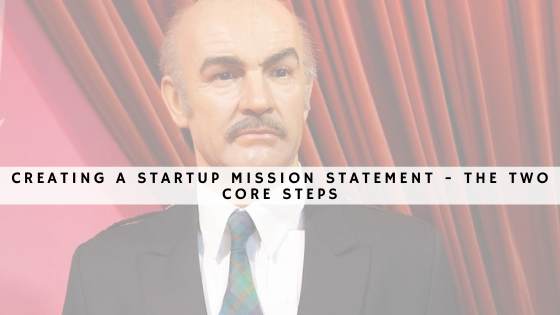
You may think that coming up with a mission statement is a waste of time, that it’s BS, or fluff. I think it isn’t. In fact, it is critical for your startup as it helps you deeply figure out what you’re truly about, and fine tune your company’s compass. It’ll help you define and understand your holistic goals, sets your company apart from the competition, and assists in focusing your activities toward fulfilling your vision.
As Robert Greene, the author of Mastery says “having a sense of purpose and direction gives energy to every single thing that you do. Go back and realize who you are that makes you unique.”
Two weeks ago, I talked to Yoel Israel from WadiDigital for the company’s LinkedIn page, and this interview made me reflect on the subject, hence this blog post.

Here are the two key steps:
1. Start the discussion internally.
Sit down with the team (or “Zoom down”) and talk about it
Your mission statement doesn’t necessarily have to start with your product. It can start with you and your team because a startup is very much about the people that make it, in the same amount as, if not even more than, your product. Pivoting is not a rare thing in the world of startups, and even when pivoting, a mission statement can still hold true. Therefore, you should sit down together and make an actual list of everything you care about and what you want to do, and through this, hone a mission statement that you feel positive about.
Discuss the following:
- What’s our purpose? Purpose has to be
- personally meaningful to you
- Bigger than you
- Future oriented – you have to work towards it
- What do we care about?
- What are our shared values?
- What is it that we deliver and how does it reflect the above?
- What is it that we do differently?
Your mission statement doesn’t necessarily have to start with your product. It can start with you and your team because a startup is very much about the people that make it, in the same amount as, if not even more than, your product. Pivoting is not a rare thing in the world of startups, and even when pivoting, a mission statement can still hold true. Therefore, you should sit down together and make an actual list of everything you care about and what you want to do, and through this, hone a mission statement that you feel positive about.
This statement doesn’t necessarily need to be set in stone. I believe that it doesn’t have to stay the same and entirely unchanged with a startup for life. It can be flexible and changeable. After all, many large companies have changed their mission statements and it didn’t have a negative effect on them.
Apple’s old mission statement was “a computer in the hands of everyday people” (Entrepreneur) and it was changed to “bringing the best user experience to its customers through innovative hardware, software, and services” (Apple). Microsoft’s original mission statement was “a computer on every desk and in every home” (Business Insider) but it was replaced by “empower every person and every organization on the planet to achieve more” (Microsoft). Google has so far gone with its mission statement “to organize the world’s information and make it universally accessible and useful” (Google) but its co-founder Larry Page said in 2014 that the company had outgrown this mission statement and that they were trying to work that out (Financial Times).
It’s okay to change your mission to move with the times and the changing business environment.
Once you have a statement,
2. tie it down to the outside world – gather feedback from customers, friends, and family.
It’s important to see that your statement resonates and that the outer world responds well to it. Start gathering feedback from your current customers, assuming there are such. If there aren’t any, go social, talk to your friends and family, try to get as much feedback as possible, and observe how they react.
If the statement doesn’t sound like who you are as a startup, then something was left unclear and it’s just a matter of communicating it clearly. If the feedback you get is that you’re being a hypocrite and your words are hollow – don’t correlate with how your company operates – that’s priceless feedback. Where is the gap between what you believe you’re conveying and waking up in the morning for – and reality. Can you change it?
Once you have a mission statement that meets reality, you’ll be able to align your actions messaging and goals around it. That’s pretty meaningful, if you ask me. And the reason I’m confident that a strong mission statement is a foundation and guiding principle of any successful startup
Wrapping up with a dosage of inspiration from the legendary Steve Jobs and his famous here’s to the crazy one’s speech:
Hopefully, this quick post has given you some useful insights to assist you in getting clarity and honing the most accurate mission statement for you. Good luck!
Business & Finance Articles on Business 2 Community
(57)
Report Post





